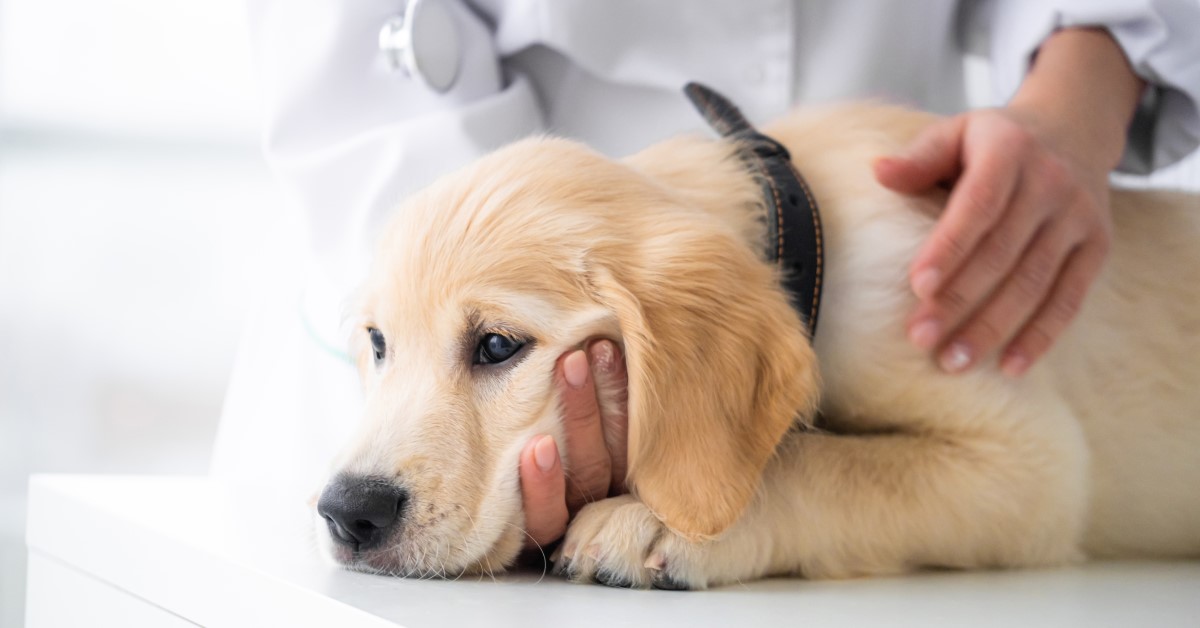What You Need to Know About the Mystery Dog Illness
Dog owners, learn about the new mystery illness that could threaten your pets.

As a caring, responsible dog owner, you no doubt take all the usual steps to keep your beloved pooch healthy. However, over the past few months a mysterious new dog disease has appeared -- a respiratory illness that creates chronic respiratory issues in dogs. Although researchers are working hard to identify the pathogen involved, it is not currently known what causes this new mystery illness. In the meantime, dogs in multiple states face risk of infection. Take a moment to explore what we currently know about this mysterious canine disease, from its causes and symptoms to what you can do to keep your pet safe.
What Are the Symptoms?
Symptoms of the new dog disease resemble those of many other common respiratory ailments, from bordetella ("kennel cough") to canine influenza. Symptoms of the new disease include coughing, sneezing, rapid breathing, and wheezing noises while breathing. The coughing tends to be at its worst in the morning and evening hours. You may also see fluid discharge from your dog's nose and/or eyes.
Respiratory issues may be accompanied by other, more general signs of illness. Watch for signs of fever, lethargy, loss of interest in food, dehydration, weight loss, and exercise intolerance. Even if your dog doesn't have the new mystery illness, you should get these symptoms checked out by a veterinarian.
What Causes The New Dog Disease?
Researchers remain puzzled by this respiratory dog illness, which has appeared in Rhode Island, Massachusetts, Oregon, Colorado, and New Hampshire since this summer. The usual lab tests to identify pathogens have failed to make any clear identification of the "bug" responsible, presumably because it's simply too small to show up under standard testing techniques.
Fortunately, researchers are getting closer to an answer, partly through a process of elimination. Some have noted that since the current techniques used to identify unknown viruses have come up empty, the cause doesn’t appear viral in nature. That leaves some strain of bacteria as the likely culprit. While scientists haven't managed to pinpoint the exact bacterium or recreate it under lab conditions, antibiotic drugs probably offer the smartest treatment option.
How Dangerous Is This Respiratory Dog Illness?
Like other canine respiratory infections, this disease appears to spread through the air, meaning that any dog who breathes the same air as an infected animal could contract it. But how much danger does your pet face if it comes into contact with the pathogen? Apparently, the biggest concern revolves around potential complications.
The disease itself, unpleasant as it may be for infected dogs, doesn't appear to cause death directly. Researchers characterize it more as a source of chronic respiratory distress. However, it also raises a dog's risk for secondary bacterial infections, including bordetella and pneumonia. In fact, several dogs weakened by the mystery illness have died within a day or two from secondary pneumonia. Other dogs have developed chronic pneumonia and/or inflammation of the tubes that supply incoming air to the lungs.
How Can You Protect Your Dog?
You might think that you have no options when it comes to protecting your four-legged friend against an unidentified disease. Keep in mind, however, that the disease seems to spread via dog-to-dog contact. The smartest and most preventative step you can take, therefore, is keeping your dog away from other dogs.
Until researchers have found a surefire way to treat the disease effectively, you should avoid places where dogs tend to cluster together. This means doggy care care centers, boarding facilities, and crowded dog parks. If you want to take Fido for a walk, do so in an area unpopulated by other dogs or at a time when those other dogs won't be around. If your pet needs professional supervision in your absence, hire a dog sitter to watch your pup from the safe environment of your own home.
Maintaining your dog's optimal wellness can also help prevent infection by this mysterious disease. The healthier your pet, the more effectively it can resist illness. By contrast, dogs with unaddressed underlying conditions may prove especially vulnerable to infection. Schedule a wellness exam to make sure your dog is in tip-top shape. If your vet spots a problem, get that problem treated immediately.
Effective wellness care also includes regular vaccinations as needed. In addition to the usual core vaccinations every dog needs, ask your veterinarian whether you should have your dog vaccinated against bordetella and canine influenza. The more you can do to keep your dog's respiratory system healthy, the greater your dog's chances of making it through the current threat with flying colors.
If Trouble Strikes, See Your Veterinarian
Dealing with a mysterious canine disease that defies identification can frighten and frustrate dog owners. However, if you follow the preventative measures recommended above, you can limit your pet's exposure to the pathogen, whatever it might turn out to be. If your dog shows any of the symptoms we've discussed, visit your veterinarian immediately to get the symptoms treated and prevent secondary infections from setting in. With the right care, you and your dog can enjoy many more happy years together!
Ready to start saving money on pet wellness care?
Then take a look at Mint Wellness, the pet wellness plan that provides fast reimbursement on routine pet care. Save on vaccinations, wellness exams, preventatives, dental, and more!
Learn More


